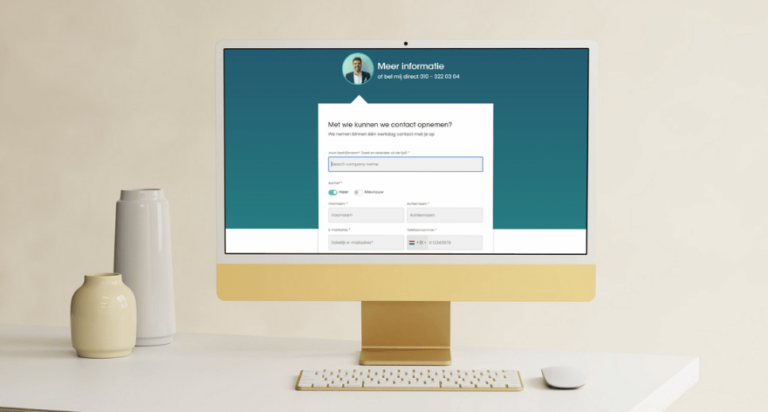
Performance branding from a B2B perspective: The best of both worlds
In B2B marketing, performance branding combines brand-building with measurable results. Discover how data-driven strategies create both trust and growth.
We're curious and happy to share our findings. Read the latest blogs on Master Data, Risk Management, Marketing Intelligence and more here.

In B2B marketing, performance branding combines brand-building with measurable results. Discover how data-driven strategies create both trust and growth.

Many companies have not organized their data management effectively, leading to inefficiencies, errors, and missed opportunities. Fragmented data and manual processes slow down decision-making, leaving competitors ahead. With Master Data Management, you can gain control over your data, automate processes, and achieve a competitive advantage.

Europol's latest report reveals how criminal networks are increasingly using advanced digital techniques and legal business structures. Discover how businesses can protect themselves by utilizing risk management, data analysis, and UBO monitoring to counter this growing threat.

Clean data is essential for every company, but manual cleaning is time-consuming and error-prone. Discover how automated tools can efficiently keep your data clean, saving costs, ensuring consistency, and optimizing business processes.

AI, such as ChatGPT, optimizes sales processes by automating tasks like email personalization, administration, and market analysis. Success, however, depends on the quality of the input data and critically checking the output.

Brand preference is essential in the B2B buyer's journey, where decision makers often do 90% of their research before contacting them. This blog covers how brand loyalty and timing are crucial, and how a CRM system helps optimize the buyer's journey through relevant content and data analysis.

Een Ideal Customer Profile (ICP) is cruciaal voor gerichte marketing en sales in B2B-strategieën. Dit blog beschrijft de stappen voor het creëren van een ICP, van data-analyse en verrijking tot het opstellen en toepassen van het profiel voor betere klantrelaties en een hogere ROI.

Use sales triggers to connect with customers at the right time. Identify signals such as business moves or new financings with CRM systems, social media and AI. This improves your timing, increases conversions and makes sales processes more efficient. Discover how strategic data analytics can optimize your sales.

Web forms are crucial for B2B companies. By leveraging external data and automatic data enrichment via APIs, leads can be processed more efficiently, optimizing marketing and sales.

Companies like Apple and Google ask for your D-U-N-S number, but how do you get this number and what do these companies use it for? In this article, we explain and discuss the benefits of having a D-U-N-S number

The integration of AI in credit management increases efficiency and accuracy, transforming the role of credit managers into more strategic tasks. Human expertise remains crucial in an AI-supported future.

We are KVK service provider, which gives us access to more and current data. This improves our services and provides clients with comprehensive and up-to-date business information. Discover more benefits in our blog.
Did a promising lead come in? Good for you! But now it's time to make some business decisions. Are you going to accept him as a customer? Can he buy on credit, and if so on what terms? When making these decisions, use our reliable business information, such as our credit risk data. Then you avoid doing business with companies that actually cannot meet their financial obligations. Read more.
Knowledge and understanding of your market is critical to your success. The Dun & Bradstreet Data Cloud is the largest of its kind and allows you to conduct comprehensive analysis, understand your market share and market penetration, and uncover growth opportunities.
How many companies are there actually within a particular region and how big are these companies? How many companies are active within a specific branch and how many people are employed there? You can quickly and easily make counts and selections in D&B's international companies database on the basis of many criteria. This gives you an insight into where you can best focus your efforts and where your chances of success are the greatest. Read More
By integrating our rich database into your ERP system, you can benefit in many ways. For example, you clean up and keep your data clean throughout your organization. You can validate and enrich your customer and prospect information directly from your business application. Current information becomes instantly accessible within your ERP and you can use it to automate your acceptance process and improve scoring model. Read more.
Almost 70% of Dutch BVs are linked via shares to another company in the Netherlands or internationally. More than 30% of Dutch BVs and NVs have a link to foreign companies. The Dun & Bradstreet Data Cloud is the most complete and reliable source for insight into the Dutch and foreign relationships of your business partners, ranging from small unknown companies to the largest multinationals with thousands of branches. Read more.
An initial check when selecting a supplier is not sufficient. It is then important to make all changes in risks transparent and to monitor them. This keeps you informed exactly how the risks in your total supply chain are developing. Only with this information can you correctly assess all risks within your portfolio. Read more.
Altares Dun & Bradstreet
Otto Reuchlinweg 1094
3072 MD Rotterdam
Notifications